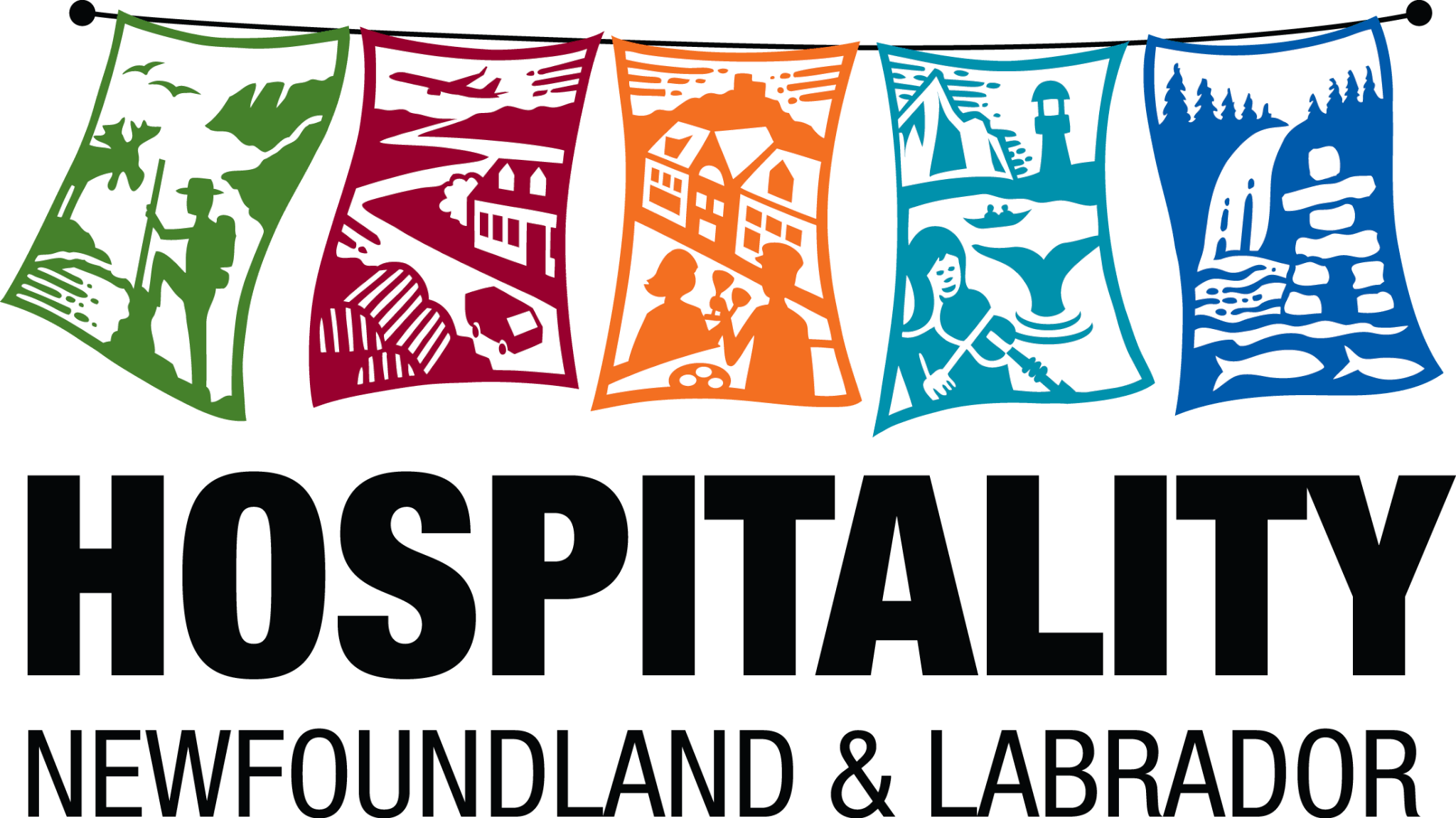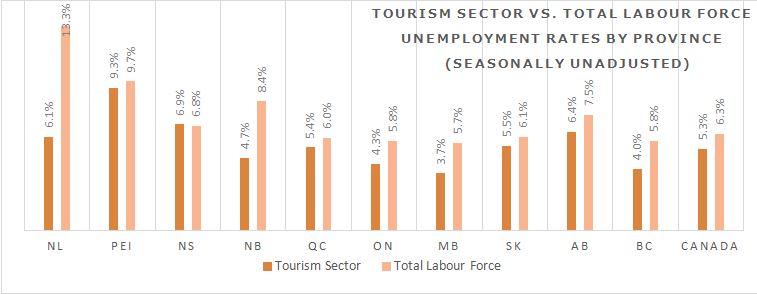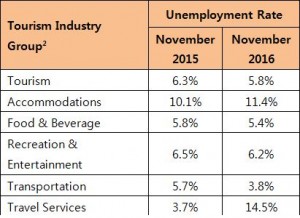Canadian Tourism Employment Snapshot – October & November 2016
By aorwebadmin
October 2016 (seasonally unadjusted)
- In October 2016, the unemployment rate1 in the tourism sector was at 5.3%, which is 0.5% lower than the rate reported in October 2015, but the same rate as the previous month (September 2016) when the unemployment rate also stood at 5.3%.
- At 5.3%, tourism’s unemployment rate was well below Canada’s seasonally unadjusted unemployment rate of 6.3%.
- With the exception of the accommodations sector, all tourism industry groups have reported lower unemployment rates than they had one year ago.
- On a provincial basis, tourism unemployment rates ranged from 3.7% in Manitoba to 9.3% in Prince Edward Island.
- The seasonally unadjusted unemployment rates for tourism in each province, with the exception of Nova Scotia, were well below the rates reported for the provincial economy.
- Tourism employment comprised 11.0% of the total Canadian labour force for the month of October.
1 To determine unemployment rates, industrial (NAICS) classifications are based on the most recent job held within the past year, and are self-identified by the respondent. Unemployed persons are those who, during the reference period, were available for work but were: on temporary layoff; were without work; or were to start a new job within four weeks.
2 As defined by the Canadian Tourism Satellite Account. The NAICS industries included in the tourism sector are those that would cease to exist or operate at a significantly reduced level of activity as a direct result of an absence of tourism.
SOURCE: Statistics Canada Labour Force Survey, customized tabulations. Based on data for the week ending October 15, 2016.
November 2016 (seasonally unadjusted)
- In November 2016, the unemployment rate1 in the tourism sector was at 5.8%, which is 0.5% lower than the rate reported in November 2015, but higher than the previous month (October 2016) when the unemployment rate stood at 5.3%.
- At 5.8%, tourism’s unemployment rate was well below Canada’s seasonally unadjusted unemployment rate of 6.3%.
- The accommodations and travel services sectors have reported higher unemployment rates than they had one year ago, whereas the food and beverage, recreation and entertainment, and transportation industry groups have all reported lower unemployment rates than last year.
- On a provincial basis, tourism unemployment rates ranged from 3.4% in Manitoba to 21.3% in Prince Edward Island.
- The seasonally unadjusted unemployment rates for tourism in each province for this month saw four provinces above the rates reported for their individual provincial economy, while the rest were slightly below the rates reported.
- Tourism employment comprised 11.1% of the total Canadian labour force for the month of November.
1 To determine unemployment rates, industrial (NAICS) classifications are based on the most recent job held within the past year, and are self-identified by the respondent. Unemployed persons are those who, during the reference period, were available for work but were: on temporary layoff; were without work; or were to start a new job within four weeks.
2 As defined by the Canadian Tourism Satellite Account. The NAICS industries included in the tourism sector are those that would cease to exist or operate at a significantly reduced level of activity as a direct result of an absence of tourism.
SOURCE: Statistics Canada Labour Force Survey, customized tabulations. Based on data for the week ending November 12, 2016.




